What is a Ketogenic Diet?
A Complete Guide to Keto
What It Is | Ketosis | In Ketosis | Keto Diet Works | Benefits | Foods to Eat & Avoid |
Diet Types | Diet You Need | Sample Plan | Tips | Tricks | Side Effects & Risks |
Supplements | Workout | FAQs | Conclusion
Are you struggling to lose some weight or gain some muscle mass? If you are, there's a good chance that you could benefit from following the ketogenic diet. This is a diet that's designed to help your body achieve Ketosis – a state where it burns fat for energy instead of carbohydrates.
There is much to know before you start Keto; well, in this detailed guide, we're going to cover it all. Stick around!
What's a Ketogenic Diet?
In its simplest form, the ketogenic diet is a high-fat, low-carbohydrate diet. It involves significantly reducing your intake of carbohydrates and replacing them with healthy fats.
This diet can be used to help you lose weight or gain muscle mass. It may also provide some other health benefits, such as reducing your risk of heart diseases.
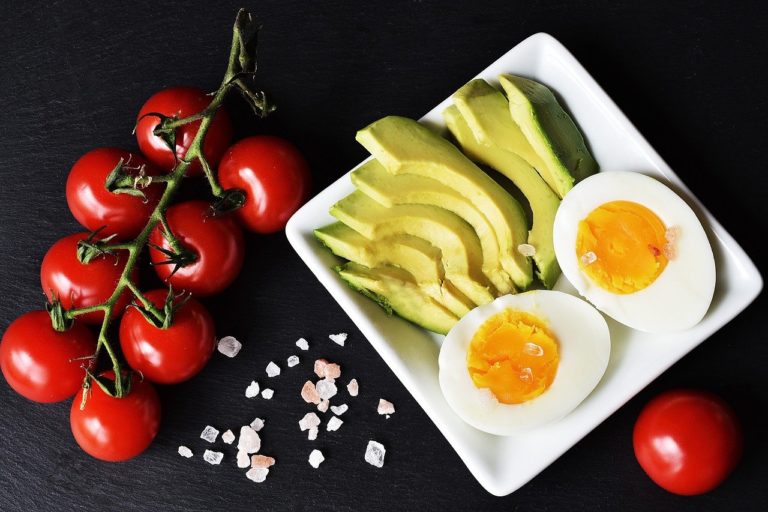
What Is Ketosis?
Ketosis is a state where your body is burning fat for energy instead of carbohydrates. This state is achieved by following the ketogenic diet.
When your body is in ketosis, it's able to burn more fat for energy. This can lead to weight loss and other health benefits.
Ketosis is a natural state for your body. It's normal for your body to burn carbohydrates for energy. However, when you consume fewer carbs, your body must find another source of fuel.
When this happens, your liver starts converting fat into ketones, which are then used for energy. This process is known as Ketosis.
The process of converting fat into ketones is really simple.
In the 1st step, the fat is broken down into fatty acids and glycerol.
In the 2nd step, the fatty acids are converted into ketone bodies by the liver.
Ketone bodies are then used for energy by the body.
But it can be a little confusing for your body at first. This is because your body is used to burning carbohydrates for energy.
Your body will start converting fat into ketones only after it has run out of carbohydrates to burn. This usually takes a few days of following the ketogenic diet.
How Do You Know if You're in Ketosis?
Everybody wants to know if they are already in ketosis and the diet they are taking is actually working. The answer is that there is no one-size-fits-all answer to this question.
Your body will enter ketosis once it has run out of carbohydrates to burn.
This usually takes a few days/weeks or even months of following the ketogenic diet. (Totally depends on your body composition and weight)
However, there are some ways to test whether you're in ketosis or not.
One way to test for ketosis is by using a urine strip. These strips change color once they come into contact with ketones.
Another way to test for ketosis is by using a blood meter. This meter measures the level of ketones in your blood.
A third way to test for ketosis is by measuring the amount of acetone in your breath. (Acetone is a ketone that's excreted in your breath)
Along with these tests, there are some symptoms that can show if you are in a ketosis state.
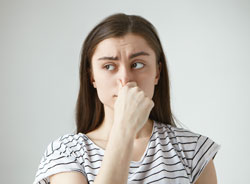
Bad Odour While Breathing
This is one of the most common symptoms of ketosis. When you're in ketosis, your body excretes acetone in your breath, which can cause a fruity or metallic smell.
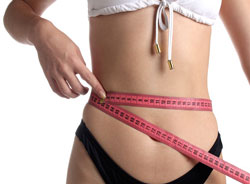
Change in Weight
If you're following the ketogenic diet, then you may notice a gradual weight loss. This happens as your body burns fat for energy instead of carbs.

Reduced Hunger
When you're in ketosis, your body is able to regulate its hunger hormones better. This can lead to reduced hunger and a fewer cravings.
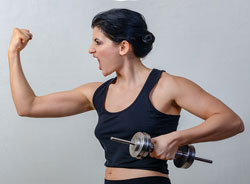
Increased Energy Levels
As your body starts burning fat for energy, you may notice an increase in energy levels. Fat is a more efficient fuel than carbs, so you may feel more energized on a ketogenic diet.

Improved Mental Clarity:
As your body starts using ketones for energy, you may notice an improvement in mental clarity. This is because ketones are a more efficient fuel than carbs and can help to protect the brain from damage.
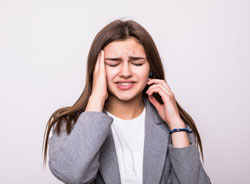
Short Fatigue Waves:
You may also experience short fatigue waves, especially in the beginning stages of ketosis. This is because your body is still getting used to using ketones for energy instead of carbs.
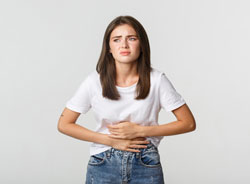
Bad Digestion:
Another common symptom of ketosis is bad digestion. This can happen because the fat content of the diet is higher on a ketogenic diet, which can be difficult for some people to digest.

Increased Urination:
As your body burns through its glycogen stores, you may notice an increase in urination. This is because glycogen is stored with water, so as it's used up, you will urinate more frequently.
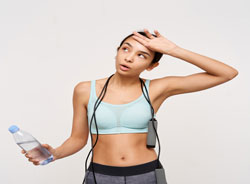
Dry Mouth:
Dry mouth is another common symptom of ketosis and can be caused by dehydration. This happens as your body starts using ketones instead of carbs and water.

Increased Thirst:
Along with dry mouth, you may also notice an increase in thirst when you're in ketosis. This is because your body is using more water than usual to break down fat into ketones.
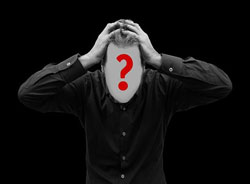
These are just some of the symptoms that you may experience when you're in ketosis. However, keep in mind that everybody is different, and you may not experience all of these symptoms.
How does a Keto Diet works?
Here is a step-by-step breakdown of how does a keto diet works.
1. Eat a ketogenic diet:
The first step is to eat a ketogenic diet. This means eating a diet that's high in fat, moderate in protein, and low in carbs. This diet might not be so tasty or may be different from what you normally eat.
But to achieve results, you have to get through this.
2. Deplete your glycogen stores:
Your body uses glycogen as its main source of energy. To get into ketosis, you need to deplete your glycogen stores by cutting back on carbs. Cutting carbs from your diet is usually not an easy task, but it is a doable one.
3. Enter Ketosis:
Once your glycogen stores are depleted, your body will start breaking down fat into ketones. This is when you will start to experience the ketosis symptoms.
4. Stay in Ketosis:
To stay in ketosis, you need to keep your carbs intake low. If you stray from this diet, you may lose the ketosis state.
5. Keto Workout:
If the keto diet alone is not enough for you, you can add a keto workout. A Keto workout is designed to help you burn fat and lose weight. It is a high-intensity workout that combines cardio and strength training.
The Keto diet and keto workouts are not for everyone. If you are pregnant, have a history of eating disorders, or are taking medication, then you should not try this diet or workout.
6. Achieve your Goals:
Once you're in Ketosis, you can start working towards your weight loss or other health goals. While following a ketogenic diet, it's important to monitor your progress so that you can make adjustments as needed.
Keto Diet Benefits | Why do people use it?
There are many benefits of the keto diet. Here are some of the most common benefits:
1. Weight loss:
The keto diet can help you lose weight by burning more fat for energy. As you know, the major part of overweight people is consisted of fats, so this diet is good for them.
Being overweight is one of the major reasons for heart diseases, diabetes, and others. So, by following the keto diet, you can get rid of all these problems, according to the research.
People want to look smart, in good shape, and more attractive, and this diet is one of the best ways to achieve that.
2. Increased Energy:
As you know that keto diet helps you to burn more fat and use less glucose for energy. So this can help in improving your physical and mental performance.
People from different age groups follow keto diet to enhance their energy levels, increase concentration and focus.
3. Improved Mental Clarity:
Following a keto diet helps in improving your mental clarity. This is because the keto diet helps to stabilize your blood sugar levels, which can improve your cognitive function.
4. Decreased Inflammation:
The keto diet can also help to decrease inflammation by reducing the production of inflammatory cytokines.
5. Increased HDL Cholesterol (Good Cholesterol):
The keto diet also helps in increasing your HDL cholesterol levels by increasing the production of LDL receptors.
6. Decreased risk of Heart Diseases:
The keto diet also helps in decreasing risk of heart diseases by improving your lipid profile and decreasing your blood pressure.
7. Decreased risk of Cancer:
The keto diet can also help to decrease your risk of cancer. This is because the keto diet can help to decrease the growth of cancer cells.
8. Improved Mental Health:
The keto diet helps in stabilizing your blood sugar levels which results in improved mental health.
9. Improved Physical Health:
The keto diet helps to improve your physical health. This is because the keto diet can help to increase your muscle mass and decrease your body fat.
10. Easier to follow:
Keto diet only has a few rules, and it is easy to find keto-friendly foods. So it is more easier to follow this diet as compared to others.
Which Foods to Eat and Avoid in Keto?
Food selection is a real task when you are doing Keto, as you have to avoid carbs and eat more fats.
Here is the list of food items you can and cannot have in Keto.
You can have:
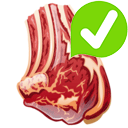
Meat
All types of meat such as beef, chicken, pork, lamb, etc.
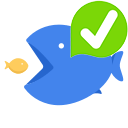
Fish
All types of fish, including salmon, trout, tuna, etc.

Eggs
All types of eggs, including whole eggs, egg whites, etc.

Dairy
All types of dairy products including milk, cheese, butter, etc.
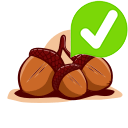
Nuts & Seeds
Nuts and seeds, including almonds, walnuts, sunflower seeds, etc.

Healthy Fats
Healthy fats, including coconut oil, olive oil, avocado oil, etc.
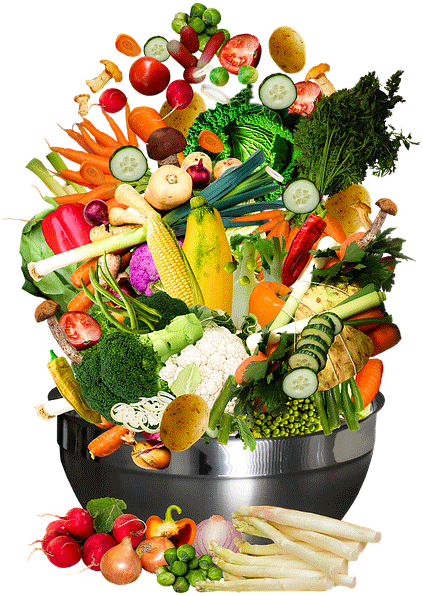
Vegetables
All types of vegetables including broccoli, cauliflower, cabbage, etc.
You can also have:
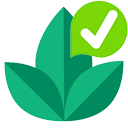
Keto-friendly Sweeteners
There are a few keto-friendly sweeteners that you can use like stevia, erythritol, and xylitol.
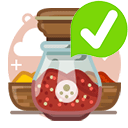
Condiments
All types of condiments, including salt, pepper, vinegar, etc.
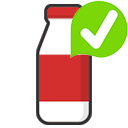
Beverages
All types of beverages, including water, coffee, tea, etc.
You cannot have:
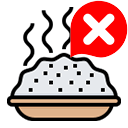
Grains
All types of grains including whole grains, wheat, corn, rice, etc.
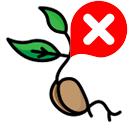
Legumes
All types of legumes including beans, lentils, peas, etc.
Fruits:
You have to be really selective in fruit selection; you cannot eat all of them. Here is a list of fruits you can have during Keto.
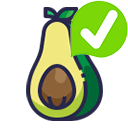
Avocados
Avocados are a great fruit to have during Keto as they are high in healthy fats and low in carbs.
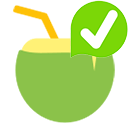
Coconut
Coconut is a great food to have as it is high in healthy fats and low in carbs.

Tomatoes
Tomatoes are a good option as they are low in carbs and high in antioxidants.
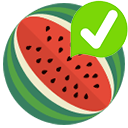
Melons
Melons are low in carbs and high in water content so it'll be a good choice to have during keto.

Berries
Berries are a great option as they are low in carbs and high in antioxidants.

Raspberries
Raspberries are low in carbs and high in antioxidants so you can have them while following a keto diet.
You can take these fruits up to a certain limit, but don’t overeat them.
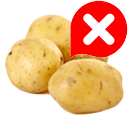
Starches
All types of starches including potatoes, sweet potatoes, etc.
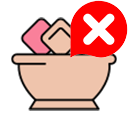
Artificial Sweeteners
Artificial sweeteners like aspartame, sucralose, etc.
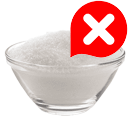
Sugars
All types of sugar including honey, maple syrup, etc.

Fast Food
Fast food including burgers, fries, etc.

Processed Foods
Processed foods including store-bought condiments, sauces, bakery products etc.

Cigarettes
Avoid cigarettes as they can damage your health.
Now you know what foods to eat and avoid on Keto, let's move on to the next section, where we will talk about the types of keto diet.
Types of Keto Diet
There are a few different types of keto diet that you can follow, including Standard Ketogenic Diet (SKD), Cyclical Ketogenic Diet (CKD), and Targeted Ketogenic Diet (TKD).
Standard Ketogenic Diet:
The Standard Ketogenic Diet is the most common type of keto diet, and it is the one that you should follow if you are new to Keto. This diet is based on eating a moderate amount of protein, a high amount of fat, and a low amount of carbs.
Cyclical Ketogenic Diet:
The Cyclical Ketogenic Diet is a variation of the Standard Ketogenic Diet that involves cycling in and out of Ketosis. This diet is based on eating a high amount of protein, a moderate amount of fat, and a low amount of carbs.
Targeted Ketogenic Diet:
The Targeted Ketogenic Diet is a variation of the Standard Ketogenic Diet that involves targeting specific times during the day to eat more carbs. This diet is based on eating a moderate amount of protein, a high amount of fat, and a moderate-to-high amount of carbs.
High-protein ketogenic diet:
The High-protein ketogenic diet is a variation of the Standard Ketogenic Diet that involves eating more protein. This diet is based on eating a high amount of protein, a moderate amount of fat, and a low amount of carbs.
How to decide which type of ketogenic diet you need?
There are multiple types of ketogenic diets, each with its own benefits and drawbacks. It's important to remember that not all ketogenic diets are created equal, and you will need to find the diet that works best for you and your goals.
The best way to decide which type of ketogenic diet you need is to consult with a healthcare professional or registered dietitian who can help you determine which diet is right for you.
Now that we've covered the basics of the ketogenic diet let's move on to the next section, where we will talk about how to start a keto diet.
Starting a Keto Diet
If you're thinking about starting a keto diet, there are a few things you need to know before you start a keto diet.
You need a plan:
Before starting a keto diet, you need to have a plan in place. This means knowing what you're going to eat, how much of it you're going to eat, and when you're going to eat it.
You need to track your progress:
In order to see if the keto diet is working for you, you need to track your progress. This means tracking your weight, body measurements, and blood ketone levels.
You need to be prepared for Keto flu:
When you first start a keto diet, you may experience symptoms known as “keto flu.” These symptoms can include fatigue, headaches, brain fog, and nausea.
You need support:
Starting a keto diet can be difficult, and it's important to have support from family and friends. You can also find support in online keto communities. Joining a community can help you stay motivated and accountable.
Cravings:
As soon as you start a keto diet, you may start to experience cravings for sugar and carbs. This is normal, and you should do your best to resist these cravings.
Let's get back to starting a keto diet
The first thing is that you will need to make some changes to your diet and lifestyle. The second thing is that you will need to start tracking your macros.
Making Changes to Your Diet:
The first thing you need to do before starting a keto diet makes some changes to your diet. This means that you will need to remove all of the foods that you cannot eat from your diet, and you will need to reduce the number of carbs that you eat.
Tracking Your Macros:
The second thing you need to do before starting a keto diet is to track your macros. This means that you will need to track the amount of protein, fat, and carbs that you are eating each day. This will help you to make sure that you are staying within your recommended daily macros.
After you have gone through these two things, you need to follow a diet plan, and yes, we are going to share that specific diet plan with you (Day-by-Day)
- Monday
- Tuesday
- Wednesday
- Thursday
- Friday
- Saturday
- Sunday
Breakfast: 2 eggs, bacon, and a cup of coffee
Lunch: Grilled chicken salad with olive oil and balsamic vinegar
Dinner: Grilled steak with asparagus and roasted Brussels sprouts
Breakfast: Bulletproof coffee with butter and coconut oil
Lunch: Mushroom omelet
Dinner: Salmon with roasted broccoli
Breakfast: 2 eggs, sausage, and a piece of fruit
Lunch: Turkey sandwich with avocado and cheese
Dinner: Pork chops with Brussels sprouts and butternut squash
Breakfast: Baked avocado egg boats
Lunch: Tuna salad with olive oil and balsamic vinegar
Dinner: Chicken thighs with green beans and roasted sweet potatoes
Breakfast: Bacon and eggs
Lunch: Grilled chicken salad
Dinner: Pork chops with vegetables
Breakfast: Keto pancakes with berries
Lunch: Steak bowl with cauliflower rice
Dinner: coconut chicken curry
Breakfast: Keto waffles with butter and syrup
Lunch: Chicken salad with olive oil and vinegar
Dinner: Roast beef with roasted vegetables
As you can see, this day-by-day keto diet plan is high in protein and healthy fats and low in carbs. It's a great way to start a keto diet.
Keto Tips:
Tips are usually very important, and these keto tips will definitely help you on your keto journey.
1. Eat Enough Protein:
In order to lose weight and stay in Ketosis, you need to eat enough protein. This means that you should aim to eat at least 0.8 grams of protein per pound of body weight.
2. Drink Lots of Water:
It's important to stay hydrated on a keto diet. This means that you should aim to drink 8-10 glasses of water per day.
3. Avoid Processed Foods:
Processed foods are high in carbs and can kick you out of Ketosis. Therefore, it's important to avoid processed foods as much as possible.
4. Get Enough Sleep:
Getting enough sleep is important for overall health, and it's also important for a successful keto diet. This is because when you're sleep-deprived, your body is more likely to crave carbs.
5. Don't give up:
If you find the keto diet difficult, don't give up! It takes time to adapt to a new way of eating, but you will eventually see results. Stay positive and keep pushing through!
6. Take Supplements:
There are some supplements that can help you on your keto journey. These supplements include MCT oil, exogenous ketones, and magnesium.
7. Eat More Fat:
In order to lose weight on a keto diet, you need to eat more fat. This means that you should aim to eat at least 70% of your calories from fat.
8. Avoid sugar:
Sugar is high in carbs and can kick you out of Ketosis. Therefore, it's important to avoid sugar as much as possible.
9. Try Intermittent Fasting:
Intermittent fasting can help you to lose weight and stay in Ketosis. This means that you should fast for 16 hours per day and eat all of your meals during the other 8 hours.
10. Be Patient:
It takes time to get into Ketosis, so be patient and keep following the keto diet plan. You will eventually reach Ketosis if you stick with it!
11. Start Small:
If you're just starting out on the keto diet, start small. This means that you should only eat 20-30 grams of carbs per day in order to start losing weight.
12. Use a Food Tracker:
It's a good idea to use a food tracker when following the keto diet. This will help you to make sure that you're staying within your recommended daily macros.
13. Be Prepared for the Keto Flu:
The keto flu is a common side effect of beginning the keto diet. This means that you may experience flu-like symptoms such as nausea, headache, and fatigue. However, this will eventually go away after your body adjusts to the keto diet.
14. Control your temptations:
The keto diet can be hard to stick to, especially if you have a sweet tooth. There are many tempting keto-friendly desserts out there, but it's important to resist the temptation and stick to your diet.
15. Don't be too strict:
If you're finding the keto diet too restrictive, don't be afraid to loosen up a bit. This means that you can eat some non-keto foods such as fruits and vegetables in moderation.
16. Get support:
If you're finding the keto diet difficult to stick to, it's helpful to get support from others who are doing the same thing. You can join a keto Facebook group or look for recipes online.
17. Have realistic expectations:
The keto diet can be effective for weight loss, but it's important to have realistic expectations. This means that you shouldn't expect to lose a lot of weight in a short period of time.
18. Be prepared for setbacks:
There will be times when you slip up on the keto diet. It's important to be prepared for these setbacks and have a plan for getting back on track.
19. Avoid alcohol:
Alcohol is high in carbs and can kick you out of Ketosis. Therefore, it's important to avoid alcohol as much as possible.
20. Reward yourself:
When you reach your goals, reward yourself with something non-food-related. This could be a new piece of clothing or a day at the spa.
The keto diet can be a great way to lose weight and improve your health. However, it's important to follow the keto diet plan carefully and stick with it for the long haul. By following these tips, you can make the keto diet work for you!
Tricks to get more out of your Keto Diet:
We understand you need some quick tricks and ways to get more out of your keto diet or just some tricks to keep you in line with your keto diet routine.
Here are some of them.
Never bring junk while doing groceries:
It's a fact that if you bring home unhealthy food, you will end up eating it. So never bring any junk food or sugary food items while doing your grocery shopping. Only buy healthy and keto-friendly foods.
Make sure you're drinking enough water:
Water is important for your overall health, but it's especially important on the keto diet. This is because water helps to flush out toxins from your body and keep you hydrated. Aim to drink 8-10 glasses of water per day.
Plan your meals ahead of time:
When you have a plan for your meals, it's much easier to stay on track with the keto diet. This means that you should create a meal plan and stick to it. The science behind planning your meals ahead of time is really simple; once you are hungry, you will try to eat anything you get your hands on; if you have planned and prepared your meals already, you are less likely to eat junk food.
Avoid eating out:
It can be difficult to stick to the keto diet when eating out, as most restaurants serve carb-heavy meals. If you do eat out, try to order a keto-friendly meal such as a salad with chicken or fish.
Make sure you're getting enough sleep:
Sleep is important for your overall health, but it's also necessary for weight loss. This is because when you're sleep-deprived, your body produces more of the hormone ghrelin, which increases your appetite. Aim to get 7-8 hours of sleep per night.
Exercise regularly:
Exercise is not only good for your health, but it can also help you lose weight. This is because exercise helps to boost your metabolism and burn more calories. Aim to exercise for 30 minutes per day.
Find new recipes:
Eating the same food all the time can get boring. So, make sure to find new and interesting recipes to keep your diet exciting. There are plenty of keto-friendly recipes online or in cookbooks.
Cook food yourself:
If you cook your own food, you will know exactly what's in it. This is important on the keto diet, as you want to avoid eating any foods that contain hidden carbs or sugars.
Prepare keto snacks:
If you're traveling or on the go, it can be difficult to find keto-friendly snacks. So, make sure to prepare some keto snacks ahead of time, such as hard-boiled eggs, cheese sticks, or a small salad.
Focus on your digestion:
When you're first starting the keto diet, it's important to focus on your digestion. This means that you should take the time to eat slowly and chew your food properly. If you feel any loading or acid reflux, make sure you cure these things properly in the first place.
These are some of the tricks that can help you get more out of your keto diet. By following these tips, you can make the keto diet work more for you!
Side Effects and Risks of the Keto Diet:
Just like any other process, Keto has its side effects and risks involved. Some of them are described as follows.
Keto Flu:
This is the most common side effect when starting a keto diet. Keto flu symptoms include headaches, fatigue, nausea, and dizziness. These symptoms usually go away after a few days.
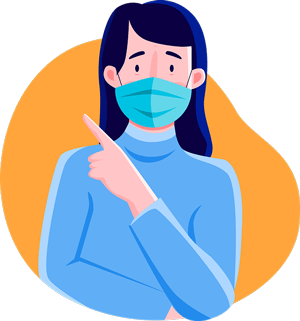
Kidney Stones:
The keto diet can increase your risk of developing kidney stones. This is because the diet causes your body to excrete more calcium in your urine.
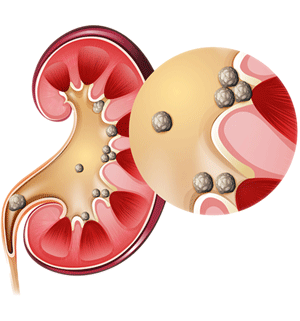
Low Blood Sugar:
If you're not eating enough carbs, your blood sugar can drop to dangerous levels. This can cause dizziness, shakiness, and even fainting.
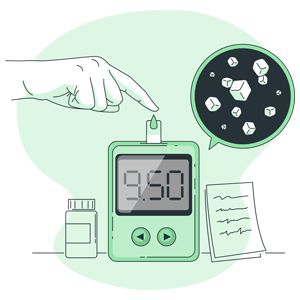
Fatty Liver:
The keto diet can cause your liver to become overloaded with fat. This can lead to inflammation and scarring of the liver.
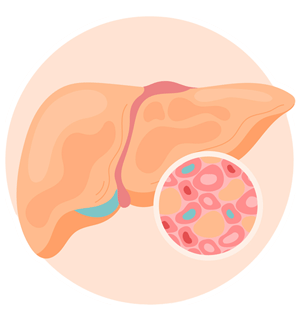
But all of the side effects are not guaranteed to happen; they may or may not! Just be careful.
Supplements for a ketogenic diet:
There are a few supplements that can help you on your keto journey. If you are a lazy person, like me, Supplements can do a lot for you. They will do all the heavy lifting for you, and you can simply enjoy the results.
Here are some of the main benefits of using supplements for a ketogenic diet:
1. They help you get into Ketosis faster:
If you're struggling to get into Ketosis, supplements can help. By taking exogenous ketones or ketone supplements, you can help your body to get into Ketosis more quickly. This can make the keto diet easier to follow.
2. They help you stay in Ketosis:
Once you're in Ketosis, it's important to stay there. Supplements can help you do this by providing your body with additional ketones. This can help you to stay in Ketosis and achieve your weight loss goals.
3. They improve your health:
The keto diet can be beneficial for your health, but supplements can make it even better. By taking supplements, you can improve your mental clarity, energy levels, and overall health.
4. They help you lose weight:
The keto diet is a great way to lose weight, but supplements can help you to lose it even faster. By taking supplements, you can increase your metabolism and burn more calories. This can help you to lose weight quickly and safely.
5. They help you stick to the keto diet:
Sticking to a keto diet can be difficult, but supplements can help. By taking supplements, you can reduce your cravings and hunger. This can help you to stick to the keto diet and achieve your weight loss goals.
6. Keep up your energy requirements:
When you're on a keto diet, it's important to maintain your energy levels. This means that you need to eat enough calories and carbs to support your activity level. Supplements can help you do this by providing your body with additional energy.
The Bottom Line!
The keto diet is a high-fat, low-carbohydrate diet that can help you lose weight. However, the diet has some side effects and risks that you should be aware of before starting it.
Additionally, there are a few supplements that can help you on your ketogenic journey.

*For US only
KETO BHB
Powerful new formula that triggers fat- burning ketosis. Melts fat fast without diet or exercise.
Price: $49
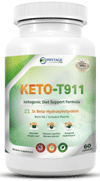
*US, CA, UK, AU, NZ
KETO-T911
Supplement that includes pristine ketones, bonded with ultra-pure, safe, and natural minerals: Magnesium, Calcium, and Sodium.
Price: $69.95
Ketogenic Workout:
There are a few different ways that you can work out while on the ketogenic diet.
Here are some of the most popular options:
1. High-intensity interval training (HIIT):
HIIT is a type of exercise that involves short, high-intensity bursts of activity followed by a brief period of rest. This type of training can help you burn more fat and calories.
2. Strength training:
Strength training is a type of exercise that helps you build muscle mass and strength. This type of exercise can help you to lose weight and tone your body.
3. Yoga:
Yoga is a type of exercise that combines stretching and meditation. This type of exercise can help you to relax and improve your flexibility.
4. Pilates:
Pilates is a type of exercise that helps you build strength and improve your posture. This type of exercise can help you to lose weight and tone your body.
5. Cardio:
Cardio is a type of exercise that helps you to burn calories and improve your heart health. This type of exercise can be done in many different ways, such as running, walking, biking, and swimming.
Why it's a good idea to do a workout while doing Keto
There are a few different reasons why it's a good idea to work out while on the ketogenic diet:
1. Improved Endurance:
When you're on the keto diet, your body is in a state of Ketosis. This means that your body is using fat for energy instead of carbs. This can lead to improved endurance and performance.
Endurance is very necessary while on Keto because when your body is in this state, it's trying to burn as many calories as possible. Improved endurance not only increases your keto diet effectiveness at the same time, but it also increases your ability to do things for a longer duration of time.
2. Increased Fat Burning:
Workouts while on the keto diet can help you to burn more fat. This is because working out causes your body to release ketones, which can help you to lose weight.
Fat cells are usually larger than water cells; they are stored in the form of groups; a workout followed by a keto diet can break those groups into smaller molecules that can then be converted into energy.
3. Increased muscle mass:
Workouts while on the keto diet can help you to build muscle mass. When you work out, your body releases growth hormone, which can help you build muscle.
Muscle breakdown happens while working out. If you are already in a ketosis state, then the ketones produced during the muscle breakdown will be utilized for energy, not affecting your weight loss goals.
4. Improved Digestion:
Working out can help to improve your digestion by stimulating your digestive muscles. This can help you to absorb more nutrients from your food. Digestion is everything, if you cannot digest your food, then your body will not be able to use the nutrients in the food you are eating, and you will not lose weight.
5. Increased calorie burn:
Working out can help you to burn more calories, which can help you to lose weight. Burning calories is an important part of any weight loss plan. By incorporating a workout into your keto diet, you can maximize your results and lose weight quickly and safely.
FAQ's
Q. What is the best age for the keto diet?
A. There is no one-size-fits-all answer to this question. Some people find success with the keto diet at any age, while others find that they need to wait until they are older to see the best results.
Q. What should I eat on a keto diet?
A. Most people following the keto diet will eat a diet that is high in fat, moderate in protein, and low in carbs. However, everyone's diet will be different depending on their own personal needs and preferences.
Q. What are the benefits of the keto diet?
A. There are many benefits to following a keto diet, including weight loss, improved mental clarity, and increased energy levels.
Q. Are there any risks associated with the keto diet?
A. As with any diet, there are some risks associated with the keto diet. These include constipation, decreased physical activity, and nutrient deficiencies. It is important to speak with your doctor before beginning any new diet to make sure it is right for you.
Q. How long should I stay on the keto diet?
A. There is no one-size-fits-all answer to this question. Some people find success staying on the keto diet for a long period of time, while others find that they need to cycle off and on to see the best results. Ultimately, it is up to you to decide what works best for you.
Q. Will I lose muscle on the keto diet?
A. It is possible to lose muscle on the keto diet, but this is rare. Most people who follow a keto diet will see an overall improvement in their muscle mass and strength.
Q. What if I can't stick to the keto diet?
A. If you find that you are unable to stick to the keto diet, it may be because it is not the right diet for you. There are many other diets out there that may be a better fit for your needs and lifestyle. Speak with your doctor or nutritionist to find the best diet for you.
Conclusion:
To conclude things, the ketogenic diet is a great way to lose weight and improve your overall health. There are many different benefits to following this diet, including weight loss, improved mental clarity, and increased energy levels.
However, there are also some risks associated with the keto diet, so it is important to speak with your doctor before starting this diet or any supplements to make sure they are right for you. Ultimately, it is up to you to decide if the ketogenic diet is right for you.
